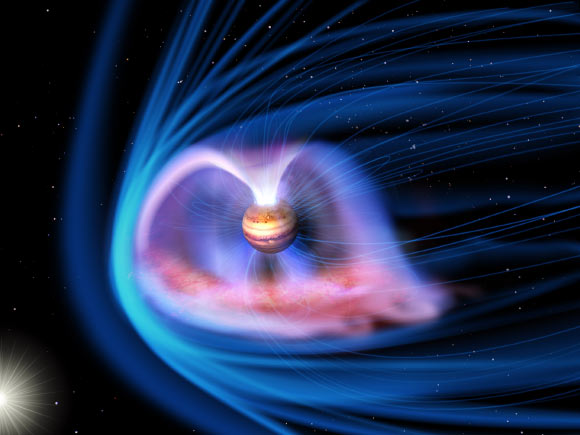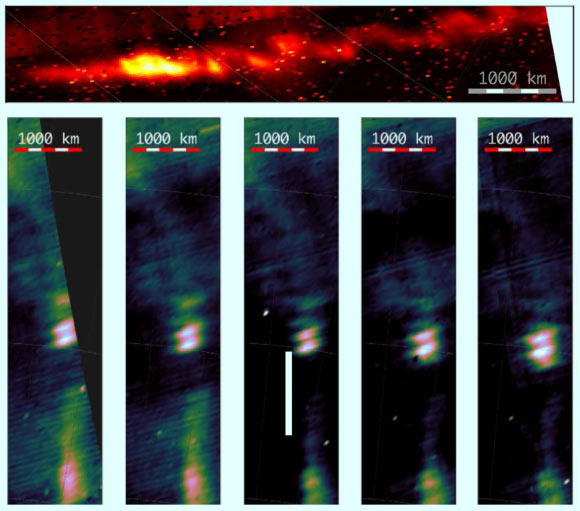High-resolution infrared images from the Jovian Infrared Auroral Mapper (JIRAM) on NASA’s Juno spacecraft show that, rather than casting one ‘shadow’ in Jupiter’s aurorae, a volcanic moon called Io casts several, in a double wing-shaped pattern, while Jupiter’s largest moon, Ganymede, casts a double shadow.

Jupiter’s moons create uniquely patterned aurorae on the gas giant. Image credit: JAXA.
The stunning phenomenon of aurorae occurs when electrically charged particles accelerate along the planet’s magnetic field lines and then interact with the upper atmosphere.
Jupiter’s moons alter this phenomenon on the gas giant by directing the streams of charged particles.
These massive bodies decorate the planet with unusual auroral patterns, previously seen as a bright spot ‘footprint’ of each nearby moon in Jupiter’s north and south hemispheres.
“Like the Earth, Jupiter has aurorae,” said Dr. Alessandro Mura of the Institute for Space Astrophysics and Planetology, National Institute for Astrophysics, Italy, and colleagues.
“These permanent electro-magnetic emissions are associated with the precipitation of magnetospheric plasma onto the planet’s ionosphere.”
“Jupiter’s aurorae have emission features, absent at Earth, associated with its moons: bright spots appear in the ionosphere at the base of the magnetic field lines that sweep past the Galilean moons Io, Europa, and Ganymede.”

Top: the Io footprint in Jupiter’s north aurora, observed on September 1, 2017. Bottom: five consecutive JIRAM images of Ganymede footprints; the images are taken on July 11, 2017 on the north hemisphere; the main Ganymede footprint (in the middle of each image, and moving down) is preceded by a dimmer precursor spot. Image credit: Mura et al, doi: 10.1126/science.aat1450.
In a careful analysis of new Juno/JIRAM images, Dr. Mura and co-authors spotted not just one ‘footprint’ from Io, but a trail of many evenly spaced bright spots that are roughly the size of the volcanic moon itself.
The pattern created resembles a trail of swirling vortices in both hemispheres, one that sometimes splits into two wing-shaped arcs.
Similarly, the scientists found that Ganymede generates a double auroral footprint.
These features suggest that magnetohydrodynamic interaction between Jupiter and its moon is more complex than previously anticipated.
“These unusual patterns could be caused by magnetic interactions close to the moons, or by interference between giant waves of electrical particles,” the study authors said.
The findings were published online this week in the journal Science.
_____
A. Mura et al. Juno observations of spot structures and a split tail in Io-induced aurorae on Jupiter. Science, published online July 5, 2018; doi: 10.1126/science.aat1450







